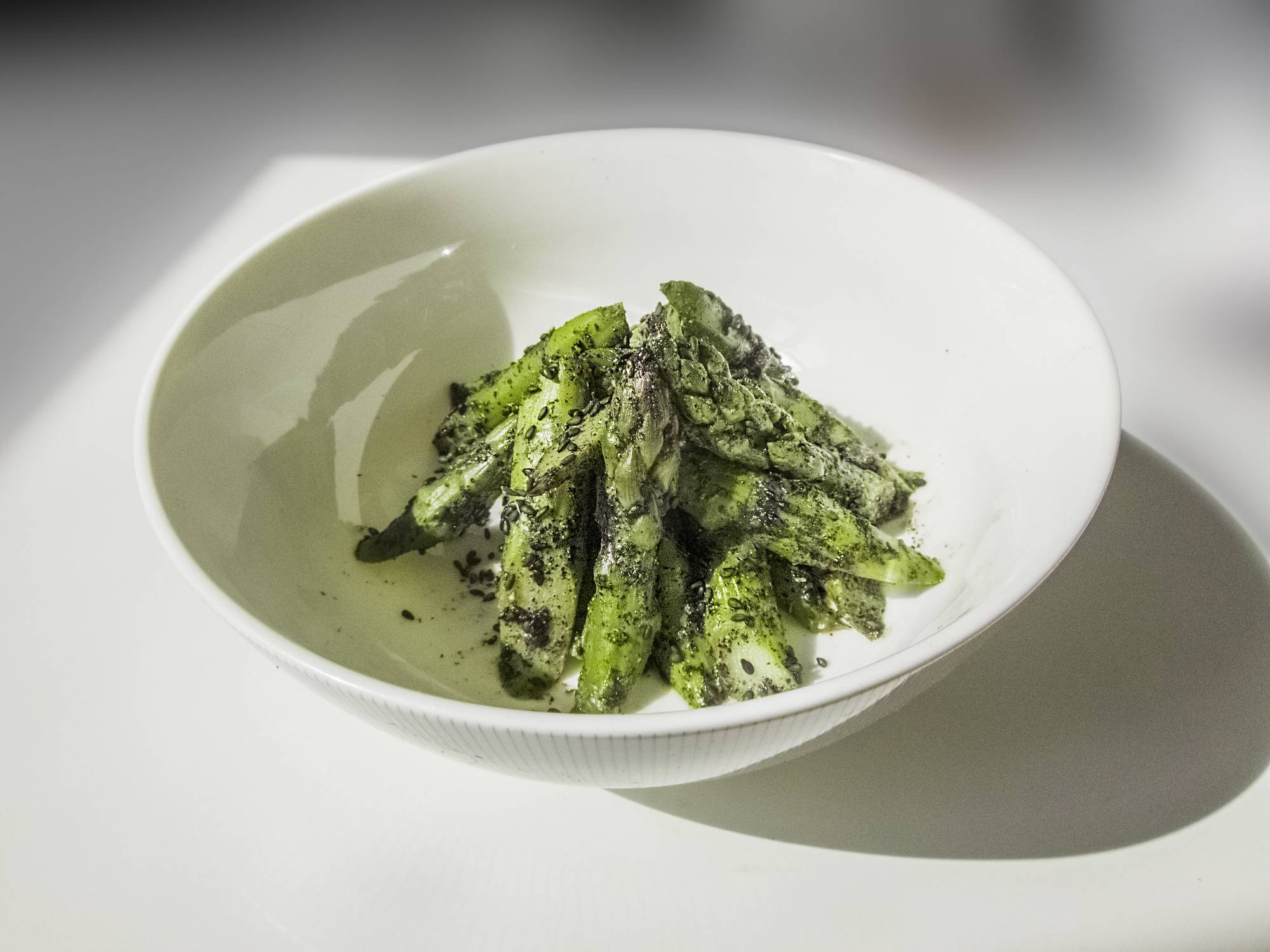Asparagus was first introduced to Japan during the Edo Period (1603-1868) by the Dutch, but as with most exotic plants it was initially grown as an ornamental rather than for eating. In the early 20th century, white asparagus, which is grown by blanching — preventing the emerging spears from being exposed to light — was cultivated in Hokkaido, mainly for export to the European market, although it was served by a few domestic high-end French restaurants.
The vegetable did not become widely cultivated for domestic consumption until the early 1970s. But instead of white asparagus, the green type predominated, as is still the case today. These days, white asparagus is usually only available in canned or bottled form, but green asparagus is a familiar sight in supermarkets, especially around this time of year.
Asparagus is a pretty expensive vegetable in Japan, so you shouldn't waste a single bit of it. Don't cut off the thicker ends of the stalks — peel off the outer skins instead, which makes them tender and edible.

















With your current subscription plan you can comment on stories. However, before writing your first comment, please create a display name in the Profile section of your subscriber account page.